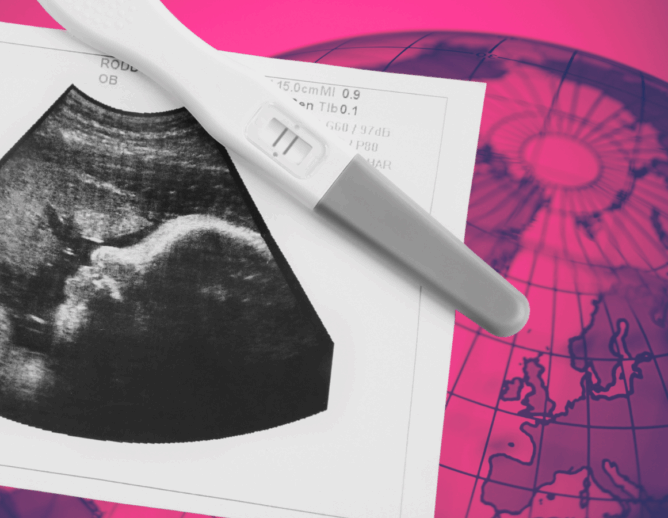Health care is a civil rights issue. Historical and contemporary ways in which health care has been provided and administered attest to the structural barriers to equal access. And disparities in both access to care and the quality of care persist today. For example, as the U.S. Department of Health and Human Services (HHS) reports, although Latinx people make up 19% of the U.S. population, they account for 29% of the uninsured population. In states that did not expand Medicaid, these disparities are even more stark. Today, the Black maternal mortality rate is two to three times higher than that of their white peers. Sexual minorities have historically faced barriers in accessing health care and insurance coverage. As HHS has noted, LGBTQI+ people experience disproportionately “higher rates of substance use, mental health conditions, HIV, cancer, and cardiovascular disease.”
The Affordable Care Act seeks to address those injustices by prohibiting discrimination in health care. It does so by incorporating various federal civil rights laws, including Title VI of the Civil Rights Act (race, color, or national origin), Title IX of the Education Amendments Act of 1972 (sex), the Age Discrimination Act (age), and Section 504 of the Rehabilitation Act (disability). It also empowers the HHS Secretary to implement these antidiscrimination protections. HHS’s implementation of Section 1557 has gone through various twists and turns, spanning various administrations. On May 6, 2024, the Biden administration adopted a new rule to implement Section 1557. Just like the rules from previous administrations, this new rule was immediately followed by litigation; two courts have issued decisions prohibiting HHS from implementing significant aspects of the rule nationwide. This expert column explains the rule, focusing on the provisions that have sparked litigation, and summarizes the cases that have challenged the rule, highlighting major themes in the courts’ decisions.
Application to Various Health Care Activities and Programs
The rule clarifies that the anti-discrimination protections extend to any health program or activity that is federally funded or administered by HHS. This interpretation is perhaps narrower than Section 1557’s reach, which prohibits discrimination in health programs and activities administered by federal agencies, not just HHS. Still, the rule encompasses a wide range of programs. It covers federal programs such as Medicare, Medicaid, CHIP, and health care exchanges. It also covers hospitals, health care providers, pharmacies, and health insurers that receive certain federal funds. The rule’s reach is therefore broad as the federal government funds health insurance and many health care services. As HHS noted, the rule reaches “almost all practicing physicians in the [US] . . . because they accept some form of Federal remuneration or reimbursement.” By interpreting the applicability of Section 1557 broadly, the rule ensures that a greater number of people enjoy civil rights protections in health care. This interpretation departs from the Trump administration’s severely narrow scope, which had limited the discrimination protections only to some programs administered by HHS and a limited class of health insurance businesses. In short, virtually all participants in health care and the health care market are protected against discrimination.
Protection Against Sex-Based Discrimination in Health Care
In line with the Supreme Court’s 2020 decision in Bostock v. Clayton County, the rule adopts a more inclusive definition of sex-based discrimination that includes sexual orientation and gender identity. Recall that the ACA protects against sex-based discrimination in health care by incorporating Title IX of Education Amendments Act. Although Bostock involved sex discrimination in the employment context under Title VII of the Civil Rights Act, HHS found that Bostock’s reasoning applies to Title IX. Broadly defining sex discrimination to include gender identity and sexual orientation will go a long way in closing gaps in health care, as the barriers that LGBTQI+ people face in accessing health care and coverage are well documented. As HHS found, such discrimination exacerbates health disparities, including “higher rates of substance use, mental health conditions, HIV, cancer, and cardiovascular disease.” HHS’s new interpretation of discrimination on the basis of sex includes discrimination based on “sex stereotypes; sex characteristics, including intersex traits; pregnancy or related conditions; sexual orientation; and gender identity.” Again, this interpretation departs from the Trump era rule, which categorically disclaimed that discrimination “on the basis of sex” covered sex stereotyping and gender identity. HHS’s inclusive definition of sex discrimination under the new rule was based on extensive findings about discrimination against LGBTQI+ individuals in health care and the health burdens associated with such discrimination. This definition also aligns with the Department of Education’s recent interpretation of Title IX that sex-based discrimination includes sexual orientation and gender identity.
Legal Challenges Against the Rule
As previously noted, over the last eight years, the implementation of Section 1557 has been subject to fierce litigation, and the new rule is no exception.
As previously noted, over the last eight years, the implementation of Section 1557 has been subject to fierce litigation, and the new rule is no exception. Right after the rule was promulgated lawsuits ensued. Various Republican attorneys general and some providers filed lawsuits in Texas, Mississippi, Missouri, and Florida, challenging the rule on various constitutional and statutory grounds. So far, the lawsuits have mainly focused on the rule’s interpretation of sex-based discrimination as including gender identity. On July 3, 2024, two days before the rule was to become effective, three courts—Texas, Mississippi, and Florida—agreed with the challengers and halted the enforcement of the rule’s gender identity protections. The courts found that HHS had exceeded its authority under the Administrative Procedure Act because sex under Title IX is limited to the gender binary. While the courts noted that Bostock had expansively interpreted that meaning of sex-based discrimination, they did not follow that path, reasoning that Bostock’s interpretation of Title VII doesn’t apply to Title IX. The courts’ reasoning in the cases followed three major themes: (i) deference to HHS after Loper Bright, Inc. v. Raimondo; (ii) textual differences between Title VII and Title IX; and (iii) federalism limits on legislation enacted under the Spending Clause. These themes are explained in more detail below.
Deference to HHS after Loper Bright, Inc. v. Raimondo
The courts’ decisions on the validity of the rule came at the heels of Loper Bright, which ended Chevron deference. Under Chevron, the courts had to defer to agencies’ reasonable interpretations of ambiguous statutes that they are entrusted with implementing. Basically, if an agency’s interpretation of an ambiguous statute was challenged, the court couldn’t substitute the agency’s interpretation with court’s, unless the agency’s interpretation was clearly wrong. But that all ended with Loper Bright. Now, the courts must “independently” determine the “best meaning of the statute.” While courts are to respect the agency’s view, that view is not entitled to deference.
Under that approach, the courts said that HHS’s interpretation of discrimination “on the basis of sex” as including gender identity and sexual orientation was not entitled to deference. Instead, the courts chose a narrow interpretation that does not protect LGBTQI+ people. According to the courts, sex under Title IX means the gender binary or, as the courts put it, “biological sex.” This narrow interpretation is the “best meaning” of Title IX, because under Loper Bright, a statute’s meaning is fixed at the time of enactment, the courts reasoned. And when Title IX was enacted in 1972, sex meant “biological sex.” Thus, the courts denied that Bostock—a 2020 decision—applied to Title IX—a 1972 statute. Because sex-based discrimination was narrowly interpreted over half a century ago, the courts ruled that HHS’s 2024 interpretation that reflects the Supreme Court’s own reasoning was incorrect.
Because sex-based discrimination was narrowly interpreted over half a century ago, the courts ruled that HHS’s 2024 interpretation that reflects the Supreme Court’s own reasoning was incorrect.
Textual Differences Between Title VII and Title IX
The courts also reasoned that the Bostock’s interpretation of sex discrimination in employment under Title VII does not apply to Title IX because the two laws are worded differently. Title VII prohibits discrimination “because of sex,” but Title IX prohibits discrimination “on the basis of sex.” The courts found these textual differences significant. Title VII’s use of “because of” requires causation—for example, firing a person for being transgender. Such firing would be discriminatory because it would be based on traits the employer wouldn’t question if the person’s sex was assigned at birth. In other words, but-for the person’s gender identity, they wouldn’t have been fired. Title IX’s use of “on the basis of,” on the other hand, does not impose the same causation requirement, the courts explained. This textual difference, however, is more like formalistic hairsplitting than substantive since the Bostock opinion itself said that “because of” is synonymous with “by reason of” or “on account of,” which aren’t any different from “on the basis of.” Indeed, the Supreme Court has used the phrases “because of” and “on the basis of” interchangeably.
The courts also read other parts of Title IX and its implementing regulations to hold that Bostock’s reasoning does not apply to Title IX. Title IX includes carve-outs that allow sex-based considerations in certain contexts, for example, single-sex schools, fraternities and sororities, separate physical education classes, bathrooms, locker rooms, and sex education classes. But Title VII doesn’t have comparable carve outs. The courts took that difference to mean that sex under Title IX indeed means sex assigned at birth, not gender identity. If sex under Title IX encompassed gender identity, these carve-outs would be meaningless, the courts reasoned. The courts relied on these carve-outs even though Section 1557 only incorporates Title IX’s ground of discrimination—sex—not the entire statute.
Spending Clause Limitations
The Mississippi and Florida courts were also skeptical that Section 1557 and Title IX, which Congress passed under its power to spend funds for general welfare (the “Spending Clause”), authorized the rule. Leveraging its spending power, Congress may place conditions on states’ eligibility to receive federal funds for programs such as Medicaid and CHIP. Because laws enacted under the Spending Clause implicate federalism interests, the Supreme Court has said that Congress must be clear when it sets conditions so that states know what they sign up for when they accept federal dollars. In that vein, the courts reasoned that for Title IX and Section 1557 to be interpreted as prohibiting discrimination based on gender identity, those statutes must clearly say so. But because those statutes simply say “sex,” and not gender identity, the courts ruled that HHS exceeded its authority when it broadly defined 1557. Without such a clear statement, the courts reasoned, the states would have no way of knowing that federal law prohibited them from discriminating against sexual minorities when they accepted Medicaid and CHIP dollars.
Litigation Status and Next Steps
Laws addressing sex-based discrimination have sparked litigation and the courts have disagreed as to whether such discrimination includes sexual orientation and gender identity.
Having found that HHS’s interpretation was unlawful, the courts stayed the rule’s effective date and prohibited HHS from enforcing its gender identity protections. While the Florida court’s ruling applies only in Florida, both the Mississippi and Texas courts’ decisions apply nationwide, meaning the protections that the courts found problematic do not go into effect even within those states that did not challenge the rule. HHS has appealed the decisions in the Fifth and Eleventh Circuits.
Laws addressing sex-based discrimination have sparked litigation and the courts have disagreed as to whether such discrimination includes sexual orientation and gender identity. For example, while the Fourth and Seventh Circuits have followed Bostock and ruled that it does, the Fifth and Eleventh Circuits have disagreed. Relatedly, the Supreme Court kept in place a Fifth Circuit ruling invalidating the Department of Education’s interpretation of sex under Title IX as including sexual orientation and gender identity. With the litigation that has followed HHS’s 1557 new rule, the Supreme Court will likely have to step in to resolve the issue.



